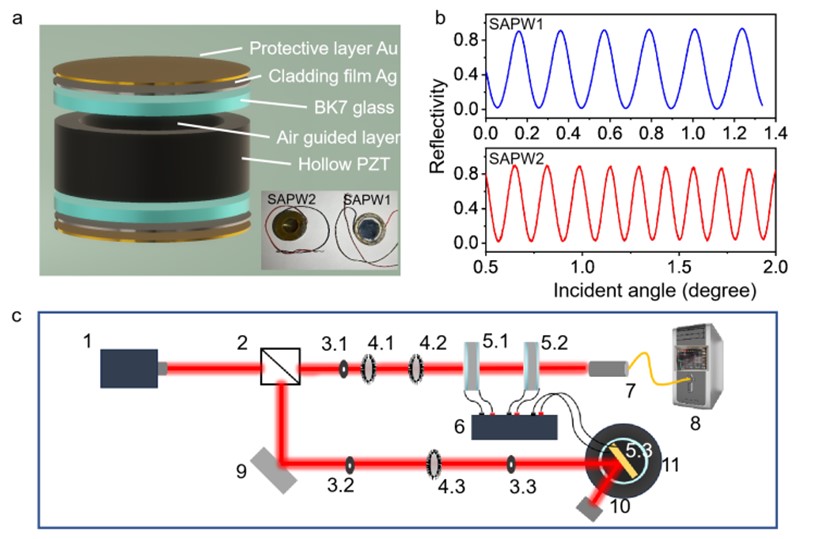
Time:2024-04-21 Read:1569
Optical filters play a pivotal role in numerous applications, including telecommunications, spectroscopy, sensing, and imaging. In optical communications, tunable waveguide filters play a crucial role in achieving wavelength division multiplexing and wavelength conversion within high-speed and adaptive optical signal processing systems. In spectroscopy, tunable optical filters with high resolution and precise wavelength selection capabilities are essential for the separation and analysis of intricate spectral features. This holds immense significance in the analysis of absorption, emission, scattering spectra. For optical sensing and imaging, tunable filters facilitate the analysis and detection of light signals within specific wavelength ranges, enabling optical measurements and imaging with high-resolution and high sensitivity. With the development of technology, the demand for higher resolution spectroscopy, high-capacity optical communications, and high precision optical sensing applications has become increasingly urgent. This has ushered in a new era of research and development in the field of optical filters.
Various methods are employed to achieve tunable filtering functionalities, including electro-optic tunable filters, acousto-optic tunable filters, birefringent tunable filters, liquid crystal (LC) tunable filters, and micro-electromechanical systems (MEMS). These methods often face limitations in practical applications, such as limited tuning ranges, lower resolution, and complex manufacturing processes. For instance, electro-optic tunable filters may require high driving voltages, leading to increased energy consumption and system complexity. Acousto-optic tunable filters typically exhibit bulky dimensions and relatively slow tuning speeds. Birefringent tunable filters demand elongated optical pathways and intricate device structures, often comprising multiple optical components such as birefringent crystals, waveplates, and polarizers, to achieve tunability. Meanwhile, the alignment and calibration of these components often demand meticulous adjustments and preparations, thereby escalating device complexity and manufacturing costs. LC devices represent a common approach for achieving tunable filtering effect, relying on the adjustment of LC molecule orientations to modify light transmission properties. However, LC devices are characterized by limited tuning ranges and often exhibit slow response speed, hindering them from the applications requiring rapid tuning response. MEMS technology is also employed in the field of filters, relying on the movement of minuscule mechanical structures to fine-tune filter characteristics. The manufacturing process is labor-intensive and faces challenges related to reliability and stability due to the intricate nature of MEMS structures. In addition, MEMS-based systems often have limited resolution, making them unsuitable for ultra-narrowband filtering requirements.
Moreover, with the development of waveguide technology, waveguides have emerged as a highly effective method for fabricating tunable optical filters, which can manipulate and control light transmission by adjusting their structure and material properties, enabling tunable filtering functionality. According to the research results, waveguide-based tunable filters offer several advantages. Firstly, waveguide structures facilitate high integration and compactness, suitable for various optical devices and systems. Secondly, waveguide material and structural properties can be selectively tailored for tunability across diverse wavelength spectra. Furthermore, waveguide technology can be combined with other tuning mechanisms, such as piezoelectric ceramic transducers (PZT) and LC, to further expand the tuning range and enhance overall performance.
The metal film waveguide (MFW) possesses numerous outstanding optical properties. The most exceptional characteristic of MFW is the excitation of ultrahigh-order eigenmodes (UOMs) within the guided layer, making it an ideal candidate for ultra-narrow filters. MFW-based filters offer high tunability, broad operational wavelengths, and ease of fabrication and integration. The filtering is achieved through the exploitation of optical coupling and resonance within the waveguide layer, rendering it suitable for applications demanding high selectivity, tunability, and a broad wavelength range due to the properties of metal. The straightforward fabrication and integration characteristics establish it as an effective solution for producing high-performance tunable filters in photonics.
In this work, we propose a unique design that utilizes the precise thickness control capabilities of PZT to modulate the waveguide cavity's thickness, which combines the MFW with a high-parallelism and high-precision PZT driver, resulting in a tunable ultra-narrow bandpass filter named as the symmetrical Ag-films cladding PZT waveguide (SAPW). PZT, under external voltage control, can achieve rapid and precise thickness adjustments of MFW, which offers high reliability, stability, and wide tuning range. Furthermore, both PZT and the planar waveguide structure are suitable for integration, enabling compact device designs for application. The design features a guided layer consisting of PZT and BK7 plate glass, flanked by metal cladding layers, constituting a resonant layer that efficiently traps light within the waveguide. Precise wavelength tuning and mode selection around 1064 nm was accomplished through the precise control of the waveguide layer's thickness using PZT. In addition, we realize an ultra-narrow-band filter with a full width at half maximum (FWHM) of 51 pm, a modulation speed of 800 ns and an efficiency of 56% by using the Vernier effect with two SAPWs. The ultra-narrow tunable filter offers new opportunities for high-resolution spectroscopy, optical communications, and sensing applications.

Figure. (a)Diagram of the SAPW and photo of real structures. (b) The experimental data for the detected ATR of two SAPWs. (c) The optical experiment setup.
The research was published in “Hongrui Shan, Qiheng Wei, Hailang Dai, and Xianfeng Chen, Quickly tunable ultra-narrow filter via metal film waveguide, Optics Letters, 49(9), 2221-2224 (2024)”.
Link: https://opg.optica.org/ol/fulltext.cfm?uri=ol-49-9-2221&id=549042